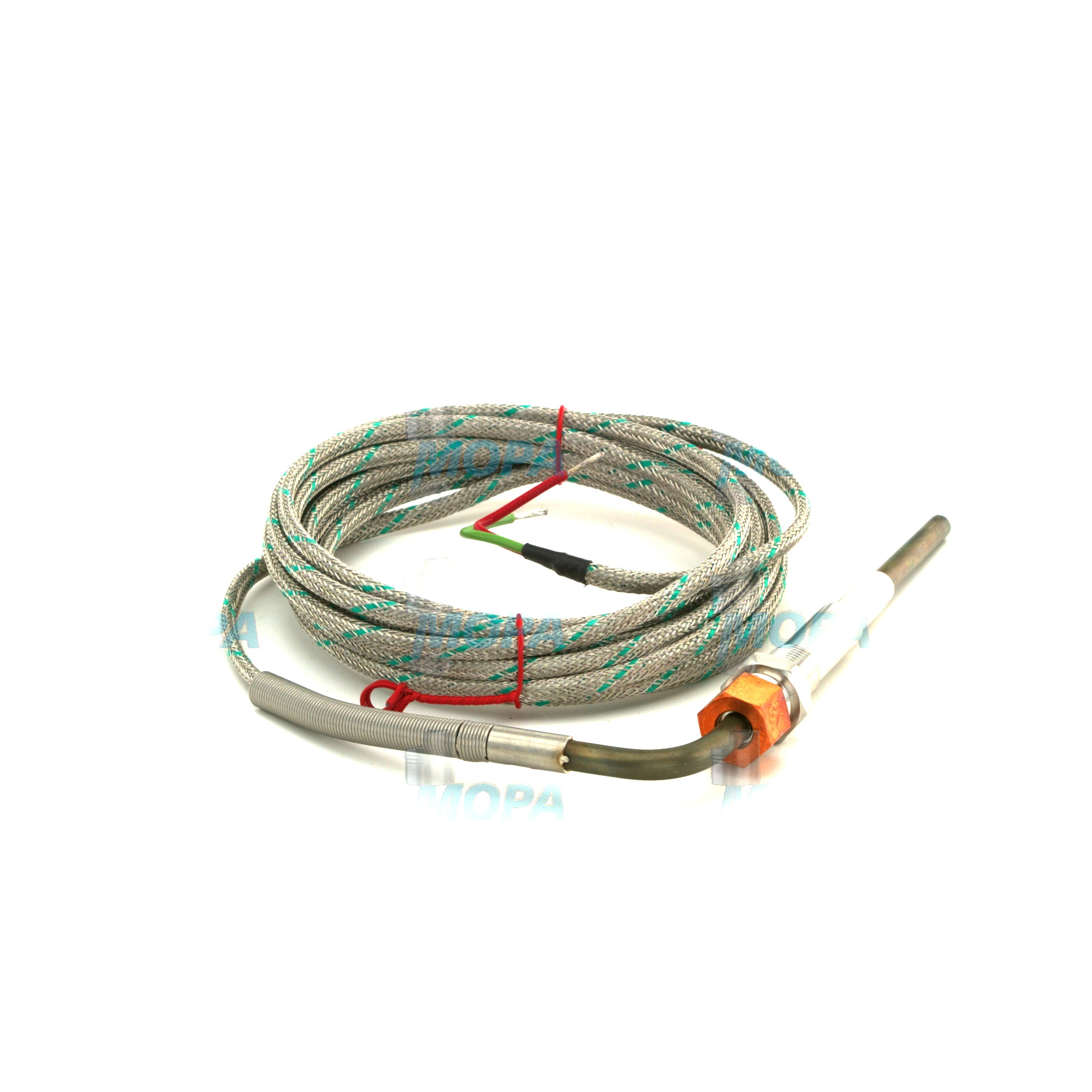THERMOCOUPLE gauges and sensors for diesel and marine engines
Gauges and sensors form the nervous system of any propulsion or power-generation engine. Within this category, temperature, pressure, speed, and level instruments continuously translate real-world operating conditions into actionable data. A THERMOCOUPLE is a core element of this ecosystem, providing fast, robust temperature readings that drive decisions at the control panel and within the engine control unit (ECU). For shipowners, operators, and plant managers, accurate and reliable gauges and sensors underpin safe operation, fuel efficiency, emissions compliance, and predictable maintenance.
On a marine engine or high-duty diesel engine, gauges and sensors work in harsh conditions: vibration, thermal cycling, salt-laden air, and electrical noise. The category includes temperature probes such as THERMOCOUPLE assemblies, resistance temperature detectors, pressure transmitters, RPM sensors, level switches, and the associated display gauges. Together they protect critical components—turbochargers, cylinder heads, pistons, bearings, and exhaust aftertreatment—while enabling precise load management and condition-based maintenance.
Technical function of gauges and sensors with THERMOCOUPLE in engine systems
Gauges and sensors convert physical values into readable signals and alarms. The ECU and bridge displays interpret these signals to regulate fuel delivery, charge air, cooling, and lubrication. In this framework, a THERMOCOUPLE applies the Seebeck effect: two dissimilar metals at a hot junction generate a millivolt signal proportional to temperature. With proper cold-junction compensation and signal conditioning, the reading becomes both stable and highly responsive. This makes a THERMOCOUPLE ideal for exhaust gas temperature (EGT) monitoring on each cylinder, turbocharger inlets/outlets, and aftertreatment in a diesel engine or a gas engine.
THERMOCOUPLE for marine engine and diesel engine temperature control
Whether Type K, J, or N, mineral-insulated THERMOCOUPLE probes offer fast response times and a wide temperature range. Grounded junctions favor speed; ungrounded junctions reduce electrical noise—an important choice in generator sets and propulsion lines. Strategically positioned probes track cylinder balance, prevent turbine overheat, protect valves and pistons, and confirm the effectiveness of SCR or oxidation catalysts. On a marine engine, exhaust temperature differentials flag injector issues, air leaks, or charge-air cooler fouling early—long before a minor imbalance becomes a costly repair.
- · Fast, accurate temperature feedback for EGT and CHT.
- · High resistance to vibration and thermal shock.
- · Broad range coverage for start-up, transient, and full-load operation.
- · Compatibility with ECU inputs, PLCs, and panel gauges.
- · Shielded cables and grounded/ungrounded junction options for EMI control.
- · Reliable signal at long cable runs in engine rooms.
- · Supports emissions control and fuel optimization strategies.
- · Enables trend analysis for predictive maintenance.
Importance for engine operation and service life
Gauges and sensors, especially a THERMOCOUPLE network on each exhaust branch, are essential to engine reliability. Accurate temperature, pressure, and speed signals ensure correct fueling and timing, protect lubricants, safeguard bearings, and prevent thermal overload. If these components drift, fail open, or short to ground, the consequences can be serious: undetected hot cylinders, turbocharger overheat, elevated SFOC, aftertreatment damage, or nuisance trips that disrupt schedules. For marine operators, even small errors propagate—fuel wastage, emission noncompliance, and unplanned port calls for repairs. Conversely, a healthy instrumentation set extends service intervals, improves uptime, and supports stable lifecycle costs.
Common issues include THERMOCOUPLE insulation breakdown, connector corrosion, and signal noise from poor shielding or grounding. Routine verification and planned replacement of gauges and sensors prevent false alarms and ensure that ECU logic receives clean, trusted inputs. The result is tighter control, smoother load sharing, and documented compliance for audits and class requirements.
Advantages of OEM spare parts suitable for gauges and sensors
Using OEM spare parts suitable for gauges and sensors—especially THERMOCOUPLE assemblies—ensures dimensional fit, correct response characteristics, and proper calibration curves. That alignment with engine control logic matters: the ECU setpoints and alarm thresholds are developed around defined signal behaviors and materials. With OEM spare parts, sealing systems, sheath alloys, and connectors match the design envelope, maintaining thermal inertia, ingress protection, and electrical integrity. This directly benefits performance and reliability while protecting budgets through lower total lifecycle cost.
From a performance standpoint, precise temperature data unlocks optimal combustion and turbocharger efficiency. For reliability, robust construction and validated materials resist vibration, fuel residues, and high exhaust temperatures. For budget control, consistent readings minimize false shutdowns and shorten troubleshooting time. And for service life, stable, drift-resistant readings reduce component stress by keeping temperatures within engineered limits—supporting pistons, valves, bearings, and aftertreatment elements over many operating hours.
MOPA as a partner for OEM parts: gauges, sensors, and THERMOCOUPLE solutions
MOPA supplies OEM spare parts for gauges and sensors with an emphasis on speed, quality, and security in trade for diesel and gas engines. Customers benefit from responsive lead times, documented traceability, and technical clarity on probe types, sheath diameters, thread forms, immersion lengths, and connector standards. Whether you need a THERMOCOUPLE for a marine engine EGT array or a matched set of pressure transmitters and panel gauges, MOPA supports specification, sourcing, and delivery with confidence.
Our network covers key engine platforms and their instrumentation requirements, helping purchasers align parts lists with maintenance windows. From single replacements to fleet-wide standardization, MOPA enables streamlined procurement, consistent measurement performance, and safe operation across engine rooms and genset halls.
Conclusion: THERMOCOUPLE gauges and sensors for dependable operation
Gauges and sensors are indispensable to modern engines, and a THERMOCOUPLE is central to fast, reliable temperature control in both marine and diesel applications. Choosing OEM spare parts suitable for this category delivers the accuracy, durability, and integration needed for performance, reliability, and cost-effective lifecycle management.
MOPA stands ready to support your instrumentation needs with secure, high-quality OEM parts and swift, professional service.



